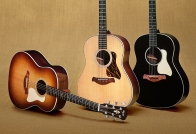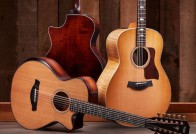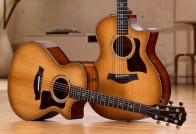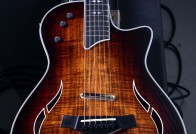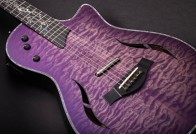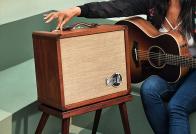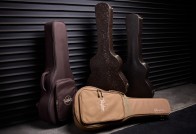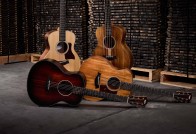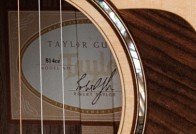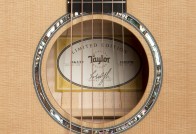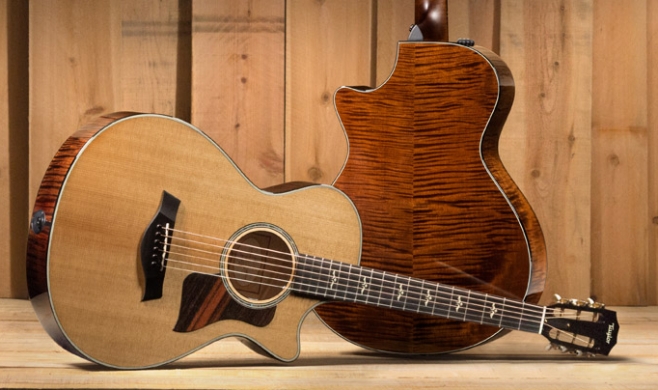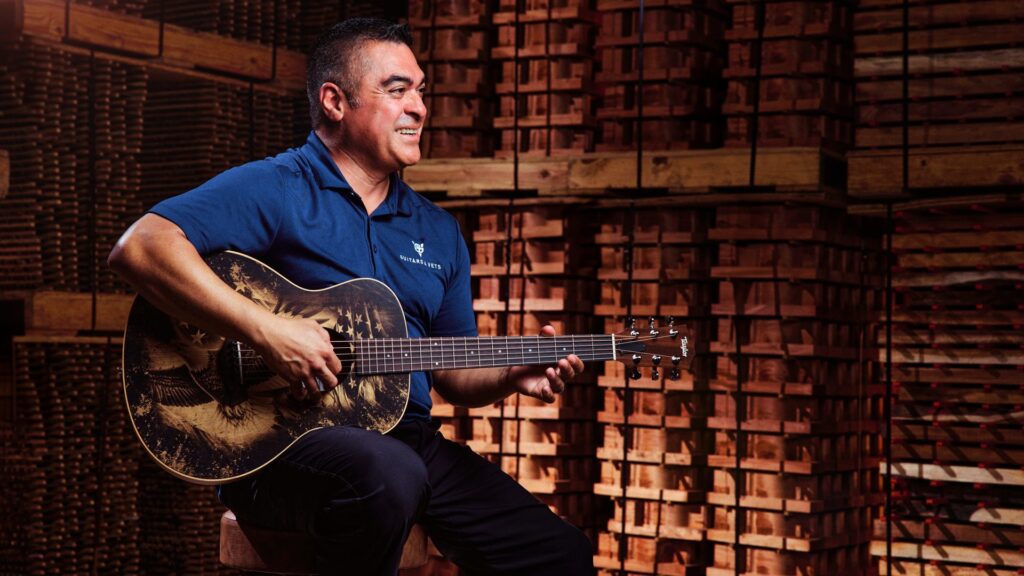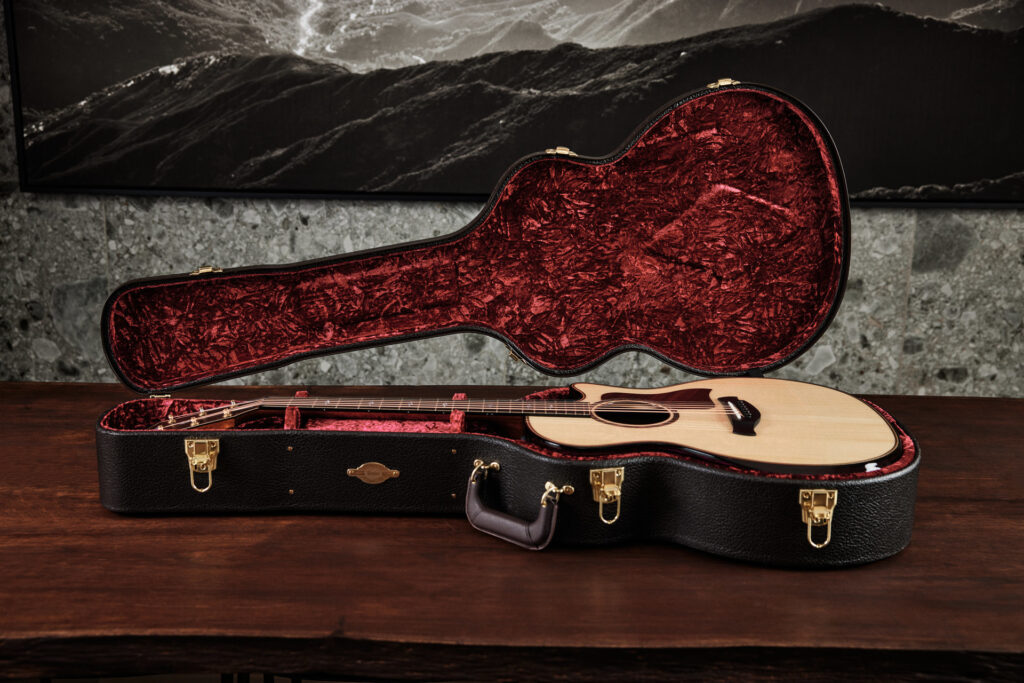With Taylor’s redesigned 600 Series Guitars, maple’s tone profile has been rebooted to reveal a richer, warmer voice with more overall volume, sustain, and complexity. On top of that, each different body style features custom-calibrated bracing and wood thicknesses to emphasize its unique tonal strengths. Here are 5 reasons our two Grand Concert guitar 600 Series models, the 612ce and 612ce 12-Fret, are worth checking out.
1. They have surprisingly powerful voices.
Despite being our smallest body style, voicing refinements have made these guitars louder and more potent — without the need to play hard. The Grand Concert’s smaller dimensions mean a smaller air chamber, which tends to place a natural emphasis on a slightly higher tonal register. But the voice can still be powerful. Think of the differences between a male and female singer: Imagine a vocal performance where, on one side of the stage you have a powerful male tenor or baritone singer; this is your larger body guitar. On the other side of the stage, you have a soprano or mezzo soprano female singer, also powerful and projecting, but in a different way; this is a Grand Concert. Both have vocal chords and appropriately matched lungs that enable them to sing with volume and projection.
2. The warmth and complexity will also surprise you.
While our Grand Concerts have always responded well to a light touch, maple small-body guitars traditionally haven’t been known for producing a lot of warmth or sustain. These do. Players will still get the articulation, detail and focus they might expect from a small body, but with a level of midrange warmth and complexity that a small-body maple guitar wouldn’t normally produce.
3. Shorter scale length = a slinkier feel.
All Taylor Grand Concerts have a slightly shorter scale length of 24-7/8 inches compared to 25-½ inches on Taylor’s other full-size guitars. Scale length refers to the maximum vibrating length of an unfretted open string. This is generally measured as the distance between the guitar’s nut and saddle. The shorter length of the string means that for any given set of strings tuned to concert pitch, there is slightly less tension. This translates to a slinkier hand feel, which makes it easier to form chords and bend strings. If you’re looking to reduce the stress on your fretting hand, the Grand Concert is a great option.
4. The 12-Fret and 14-Fret models sound slightly different.
The terms 12-fret and 14-fret refer to where the neck meets the body — either at the 12th or 14th fret. Another difference between the two designs is the location of the bridge. On the 12-fret model, the bridge is located closer to the center of the lower bout, while the bridge on the 14-fret is shifted slightly forward (closer to the soundhole). This contributes to a difference in tone. (Think of how the tone of a drum changes based on where you hit the head.) In general terms, the center of the lower bout is more flexible than the edges. This creates a bit of extra elasticity in the string. As a result, the 12-fret will respond with a slightly more mature and smooth midrange response. The 14-fret will accentuate the pristine clarity and shimmering overtones of the strings. Like people, these guitars are similar in many ways, but each has a unique outlook on life.
5. These guitars are really versatile.
These Grand Concerts can handle a broader array of playing styles than people might think a small-body guitar can. Plus, they combine the physical comforts of a smaller body with some of the tonal properties associated with a larger body. If you have a light to medium touch and want the slightly slinkier feel of a short-scale neck, try these guitars. They also fit a variety of playing applications. The tonal definition will give these guitars wonderful clarity in a mix with other instruments, while their warmth and complexity can also shine on their own for wonderfully expressive solo playing.




